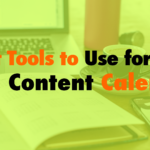What Tools to Use for Your Blog Content Calendar
- ahrefs (keyword research) 00:45
- Google Docs (collobrative writing) 03:04
- Asana for Calendar and Scheduling 04:01
- Spreadsheet/Google Sheets for Calendar 06:15
Read the full episode transcript below:
00:28 David Blackmon: Welcome to another episode of WP The Podcast, my name is David Blackmon.
00:35 Tim Strifler: And i’m Tim Strifler
00:38 David Blackmon: Today in episode 747 we’re going to talk about what tools to use for your blog content calendar. Yesterday Tim and i gave a really in-depth dive about how to plan out your blog post for your website, and not only that why it’s important, why every business should be doing it. Today we’re going to cover the tools we use to make the magic happen. And the first tool, we talked about a little bit yesterday for keyword research, we use ahrefs. Which is a play on html which is a-h-r-e-f-s dot ahrefs. And it’s a premium tool, it’s pretty pricey, you don’t have to use that. You can do Google Keyword Planner, is a free tool that you can use. It doesn’t go into as much depth i find that ahrefs just kind of allows you to dive deep it also allows you to spy on your competitors to see what they’re ranking for, what blog posts they’ve written, how they’ve positioned themselves. So you can, you can look at like take the keyword research that you find for your topic, and then go find out who’s ranking for those topics and see exactly kind of how they baked the cake. So to speak and then you can either you know mimic it do something similar. I’ll give you a little tip you know. Um that’s not a bad tip, it’s not 100 gonna get you, you know golden every time, but if there’s a 5 000 word blog post for example written on child themes. You know what is a child theme, how to do, how to how to use child themes etc. You know our rule of thumb has been to surpass it Google and search engines tend to like lots of content, so we may write a 6 000 word blog post. It doesn’t mean that you can write 6 000 words full of [ __ ] because they can tell when it’s good content and bad content. So it needs to be valuable content, it needs to be relevant to the topic that you’re writing about Um but if you can, you know surpass that then it’s just kind of worked out pretty good for us and stuff. So Tim what’s next?
03:04 Tim Strifler: Yeah absolutely, so the the next thing on our list of tools for planning out your content using the content calendar and stuff is uh Google Docs. Now this is really mainly if uh i mean you can use it no matter what, but the power is when you have multiple writers or a team of writers and you you need to have some collaboration aspect. Well Google Docs and all the tools that are part of the Google Suite are hands down the best for collaboration. Because not only can you easily see when someone else is working on it and see what they’re writing, but it also does a really good job of showing the history. And so you can break down and see what happened you can add notes uh to comment on someone else’s work. So lots of tools are built in and it’s free to be able to collaboratively write blog posts, if you have a writer that works for you or a team of writers or whatever, Google Docs is perfect for that.
04:01 David Blackmon: Absolutely. Next on the list is uh Asana. Asana is a project management tool and what we use it for is our blog and media content. And i’ll give you an example. So you know, Asana allows you to view your content in many different formats whether it’s by list board or timeline calendar view. We typically on our blog content listed as a board view so if you’re familiar with Trello, you can use Trello as well. Trello is another platform, we typically use Asana. Well not typically we do use Asana and i’ll give you an idea. So we have four columns in our blog and media content section of Asana. The first column is our template it lets us know all of our priorities it lets our writers know the styling of the post, you know. The affiliate links that need to be added, uh post focus keyword templates, we have uh snippet focus keyword templates, and it’s just kind of your whole process and yours may be different. The tone the writing guidelines that’s going to be in this first column. In our next column we’ve got new post ideas. So we’ll have all of the ideas that we’ll you know approve to write blog posts on, and we’ll put as much content in those new post ideas as possible. And then once um you know the post is is getting written, written it’s in progress and then you know for review and then approved and finalized, and then it goes to you know publishing it to your website and stuff. See we just kind of walk through and each one of those topics inside of each one of those topics you’ve got the due date who’s gonna write it, who is it signed to uh the description. All of the graphic assets, you know will Asana just does it all. So it’s it’s a complete project management tool and it’s what we use to manage our blog content.
06:19 Tim Strifler: Yeah that’s awesome, now what David described is great for the the process of each individual post, um but a tool that’s really good for seeing the high level of what topic is going to be when is nothing more than a spreadsheet. Google sheets, Excel spreadsheet whatever. Basically having a way of just having a simple calendar of here’s the post here’s the date uh you can add in things like you know here’s the keywords, that it’s targeting. Um here’s uh you know the the target number of words for this article you know, here’s the competitors that we’re competing with, you know. You can add stuff like that but basically it’s a high level of what’s happening when and then once it starts into the actual writing process and process all of that that’s when you bring it into Asana, you know. And do it a month at a time or whatever and have the you know different people and stuff but um the spreadsheet is great for uh seeing everything all at once. And so it’s not really a do you use the spreadsheet or do you use a Asana, really you should be using both. You should be able to have both views of uh kind of big picture and then individual what’s happening with this post, who’s working on what part of it and when’s this getting done type of thing.
07:33 David Blackmon: Absolutely, all right. So that gives you an idea of tools that we use to you know manage our blog content editorial calendar and stuff We hope this has been helpful, tomorrow we’ve got another great topic how to embed Google Maps into your contact forms. If you’re a local business you’ve got a brick and mortar and you want people to find you we’re going to give you an easy way to do that come, come listen tomorrow. Until then, until tomorrow we’ll see you then Tim.
07:59 Tim Strifler: Take care, bye.

Did you Enjoy this Episode?
- Will you consider sharing it online? Just click one of the share buttons below!
- Will you leave us a review? 🙂
- Have a question, or a topic request? Let us know in the comments below!
Want to Connect with David & Tim?
- David:
- Tim:








